Although pool heaters were once thought to be a “cool” added feature for your pool, they have now become almost a necessity. Pool owners are trying to stretch their pool season as long as possible and with the help of pool heaters, they now can. However, purchasing the wrong type of heater can create an unanticipated hassle for pool equipment, family, and pockets.
After selling hundreds of pool heaters last season, we became a lot more aware of the different questions and concerns pool owners have prior to making such a large purchase. Hopefully after reading our blog, you will have the necessary information to make an informed decision about the type of heater you want based on your pool needs and preferences.
Standard/Residential
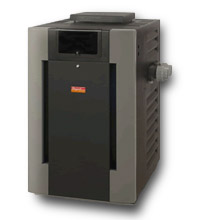
Standard residential heaters were created for pool applications at sea level. Residential pool heaters were intended to operate less than commercial heaters and at a lower workload demand. In essence, residential pool owners do not run their pool heaters 24/7. As a result, the heaters are designed accordingly, reducing the overall cost.
Commercial/ASME
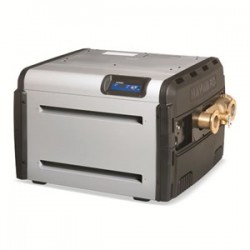
Heaters designed specifically for commercial use are rated by the American Society of Material Engineers (ASME). Unlike residential heaters, commercial heaters are prone to be used everyday, all day.Because of this, ASME heaters were designed and constructed using more durable material to handle the high demands. Commercial pools that do not use an ASME rated heater run the risk of damaging the heater and it also becomes a safety issue for the property and swimmers.

Lo-Nox
Before purchasing a heater, a pool owner should become more acquainted with their state health and safety codes. Lo-Nox heaters are a more environmentally safe way to heat your pool. They are designed using combustion control to minimize levels of nitrogen-oxide (Lo-Nox). They are built to control the amount of emissions released from the heater. Lo-Nox heaters also complies with California Air Quality Emissions Standards and qualify for state rebates as well.
High- Altitude Heaters
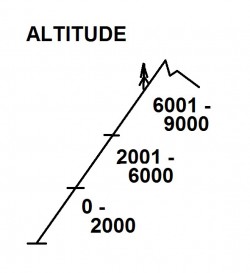
All gas appliances, including pool heaters, need fresh air containing oxygen for complete combustion. During the design process, the fuel flow rate is balanced with available oxygen at sea level. The higher you go above sea level, the less oxygen is in the air.
Before purchasing a heater, please check to see if you are located at or above sea level. Pool owners located above sea level must purchase a high altitude heater. Failing to do so will cause your heater to act in a defective manner. The issue, in this case, is not the heater but the low oxygen levels.
Cupro-nickel (Heat Exchanger)
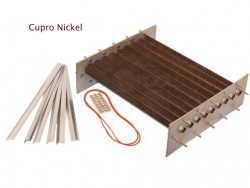
Cupro-nickel is an alloy of copper that contains nickel and other strengthening elements. Because of this, it is highly resistant to corrosion in salt water. Pool heaters with a cupro-nickel heat exchanger are recommended for customers with a salt pool. Using one with a cupro-nickel heat exchanger will extend the life of your heater.
Gas Type: Natural Gas (NG) v. Propane (LP)

Pool heaters can use two different types of gas: natural gas or liquid propane. Pool owners should verify which gas is currently running through their house. That will usually dictate which gas type you will need to purchase.
Natural gas tends to be a more cost efficient alternative to propane. However, because natural gas is considered a greenhouse gas, occurring in nature as a mix of methane and other gases, it is more harmful to our atmosphere than propane.
One of the benefits of using propane is that it does not harm our environment if released. It is a non-toxic by product of petroleum and natural gas processing. It provides more energy per unit of volume than natural gas, therefore it tends to be more expensive than natural gas
Ignition Type: Electronic v. Millivolt
Residential pool heaters are available in two different ignition styles, electronic or millivolt. The differences between the two should be noted and taken into consideration before making a purchase.
Electronic Ignition
Pool heaters with an electronic ignition are designed so that it only generates a pilot when there is a call for heat. Keeping the sensors active requires power. Therefore, power must be wired to the unit itself.
Advantages
- Only use fuel when necessary
- If the pilot is extinguished during startup, it will automatically restart
- 24 V power permits the use of digital circuitry, providing more sophisticated control capabilities
- Temperature control is easy and accurate
Disadvantages
- Always a call for small amounts of power (about 1 amp)
- Millivolt is no longer allowed with NG in certain areas because of concerns about fuel usage when the unit is not firing
Millivolt Ignition
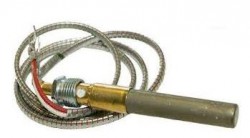
Pool heaters with a millivolt ignition are designed with a constant pilot, sitting below a small generator. The generator uses the heat of the pilot flame to generate small amounts of power. This power is then used to operate the rest of the system.
Advantages
- No electrical power needs to be supplied to the heater
- Can be placed in areas where no electrical service is readily at hand
Disadvantages
- You are always using a small amount of fuel
- Wind buffeting can cause the pilot to be extinguished and must be re-lit.
- More difficult to accurately set the temperature controls
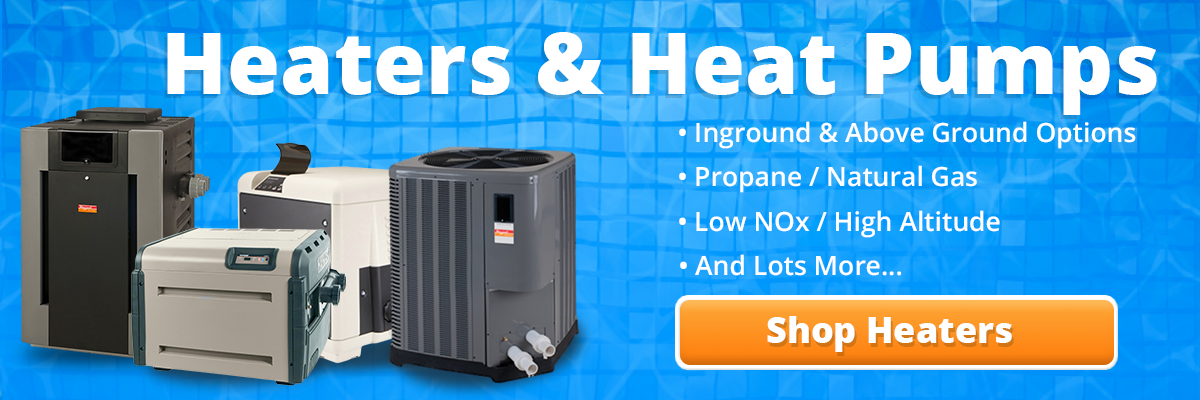
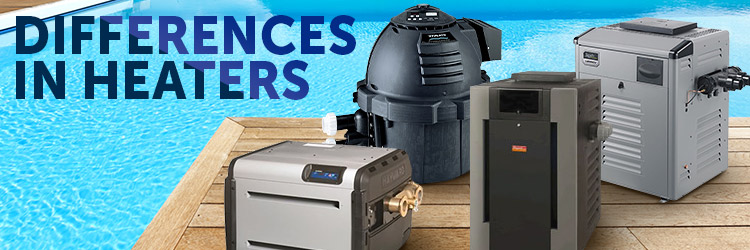


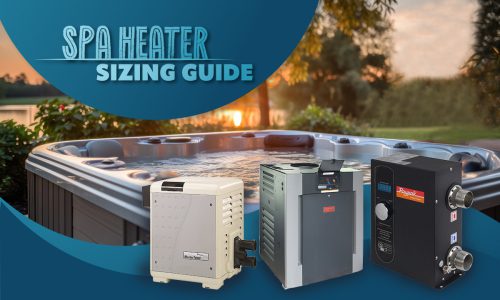
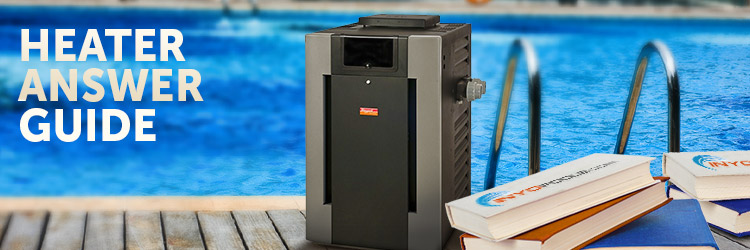






Hello,
Trying to decide between a 400k btu cupro nickel heat exchanger natural gas raypak vs the same with ASME. Heater is for a 36000 gallon indoor pool and the heater stays indoor but used all year. Previous copper exchanger completely rusted out so looking for something more longer lasting. Chemistry is usually well maintained but not perfect. The outside of the old 336k btu unit looks almost new but once take the cover off, all rusted on the floors and the exchanger is leaking from the sides. Would ASME last me longer? What parts are different? or is it just a certification label. Thanks and very informative article!
Great article. Are there any heaters without the sensitive copper material, or an alternative that can still take the heat?
We had a Pentair for 2 years before realizing how sensitive they are to water chemistry. We’re going to replace the rotted unit now, for our 30′ x 15′ x 8′ (deepest) pool. Are there non-copper options for the backyards that might only use it a few times per year, in Texas? (i.e. less sensitive to water pH when I ignore the water for a few weeks?) Thanks so much!!
We mention the cupro-nickel heat exchanger in the article. It is considered the heavy-duty alternative to copper
I live in South Florida part time and inherited a Jandy Lars Lite 2 pool heater (400,000 btu with automatic (electronic?) ignition) when I bought my house but it no longer works and has rusted through. I use natural gas. Looking to purchase either the Raypak 406A, Hayward H 400FDN or the Jandy JXi as a replacement. I do want the cupro nickel heat exchanger even though I do not have a salt water pool because of changing pool chemical levels when I am elsewhere (a professional pool company looks after the pool but when I am away I doubt these levels are checked every week). A low NOx heater would be nice but is not critical. I have an Aqualink control box together with the upgrade kit which allows me to control pool functions remotely.
Which of these would you recommend for me? While cost is not the determining factor it is still important and the new heater should be compatible with the Aqualink and the remote function.
I have had 2 Raypak heaters in the last 2 years and they both had multiple problems . Stay away.
What exactly were the issues? Do you have a salt pool or traditional chlorine?
I am looking for propane heater for my 21000 gal inground pool. Salt water. Pentair or raypack? Since it is residential, does it matter if regular or asme? Only will use it as needed. Thank you!!
It would depend on the temps you are trying to reach, at what time of year, and where you are located. Obviously, the bigger the heater, the quicker it will heat. For a pool that size, I wouldn’t go below 300k BTUs. But if you have the budget and can accommodate the propane tank needed, I would go with the 400k BTU unit.
My personal choice of heater brand is the Raypak. I prefer them because the design is so simple compared to the pool heater manufacturers. Where makers like Hayward or Pentair make one line of heaters that have to fit the full spectrum of applications. Those models have to include cupronickel heat exchangers, blowers for high elevation areas, and a host of other stuff. Raypak has various lines for those needs, allowing you to get a heater specific for your install. My picks for you: Digital Heater – R406A – Cupro-Nickel – Propane – P-R406A-EP-X or Digital Heater – R336A – Cupro-Nickel – Propane – P-R336A-EP-X
ASME is not necessary for a residential pool. Save your money.
I have low Natural gas flow to my heater ( 250,000 BTU) as the gas line is very long run from my home. I only get 3.5 at heater and heater will not start. Should I get a smaller heater???
You can get a smaller heater or have the gas company come out to see if they can fix the low flow.
You have two options, get a smaller heater, or increase the size of your gas line.
Can you get the millivolt unit with cupro nickel?
Unfortunately, the millivolt is only available in the standard copper heat exchanger style.
Hi looking for new heather have inground pool i have a lochinvar right now heat exchanger went last year and again this year it cost me 1500dollars to replace it and they told me the ine year warranty was up April 27 lol but of course so i am going to buy the raypack 407 cause its a large pool any suggestions
Do you know why the heat exchanger failed from your Lochinvar unit? Did the heat exchanger have a manufacturing defect, or was the failure due to extreme water chemistry conditions? If you want the cupro-nickel RP2100, you will need either the propane PR406AEPX or the natural gas PR406AENX
I am looking to replace our heater. We had a Hayward (either 150 BTU or 200 BTU) heater that heated our 18 foot round above ground pool really well, but the heat exchange broke (copper tubes and fitting were corroded) after 2 seasons. Now, we are gun shy. Do you think a 125 BTU heater will be enough for our Michigan weather? Also, is a heater that is not lo nox still safe to use. We are looking at the Raypak 156A Above Ground Pool and Spa Heater with Digital Controls Electronic Ignition in Natural Gas 150K BTU or the Pentair MasterTemp Low NOx Pool & Spa Heater – Dual Thermostat – Electronic Ignition – Natural Gas – 175,000 BTU . The customer service with Hayward was so bad that we are hesitant to buy from them again. Thanks!
We are in Florida, so I do not have a basis on what Michigan weathers are like, but I can imagine they are rather cold. Since you were happy with the old heater’s capabilities, I would get a heater with similar BTUs. If your original unit were 200k BTUs, I would not feel comfortable suggesting the 125. That would be almost a 40 percent drop in BTUs and cause you to run the pump and heater an excessive amount. Find out what BTUs the old unit was so you could get a better idea of what you can use.
LowNox is just referencing the emissions put out by the heater; if you installed a standard or low NOx heater, it would be safe. Certain states mandate a new heater ha to be low NOx, but it is not required for most states.
I am looking into a heater for and in-ground heater for a 26k gallon pool. I live in El Paso, TX which is about 3,740 ft above see level. I was looking at RayPak heaters, probably 400k BTUs. Is this a good choice.l? Also base on my location which is the exact model I need?
The Raypak’s are sensitive to elevation, so you would need one of their High Altitude models and the model I would choose is the RP2100 Digital Heater – R406A – 2,000′-6000′ – Copper – Natural Gas – P-R406A-EN-C .
Do you use traditional chlorine or saltwater?
Hey Matthew – I’m looking to buy/install a 400K Raypak NG heater. I understand the difference with the Cupro model, and the I understand the high altitude and ASME versions, but there are about 6 other models that fit this “Raypak 400K NG” heater that i don’t understand the difference. They are priced between $1850 and $2600 … can you help?
If you could provide model numbers of the “6 other models” I could tell you the difference. Raypak’s models have many varying combinations when you mix and match heat exchanger metals; gas types; low-nox or standard emission; electric or millivolt ignition; and elevation. Usually, the title of the product can tell you how it differentiates itself from another; example “RayPak LoNox Heater 407000 BTU NG Elec Ign – PR407AENC” or “406,000 BTU’s NG ELE W/ Cupro-Nickel Heat Exchanger – 014941”
Can I use a CuproNickel model in regular water, not salt water.
Yes, you can. Cupro-Nickel can be used in fresh or saltwater, without issue.
I am currently looking for an inground salt water pool heater. Had a Raypakk 266A heater. Corroded beyond belief by year 5. Pool has always been carefully maintained for proper pH and calcium levels . Bonding wire checked and in working order. The unit has a copper heat exchanger. Any suggestions on what to purchase without reducing heating capabilities?
For a saltwater installation, you would need a Raypak CuproNickel model.
From what I can see it seems that in ground gas pool heaters go up to 400,000 BTU’s but above ground only go up to a 150,000 BTU’s. Is this correct? And if so, why the difference?
Inground pools are generally bigger in overall size, and because their deeps ends can hold a lot more water. More water requires more BTUs to heat it.
I think this is a real great article.